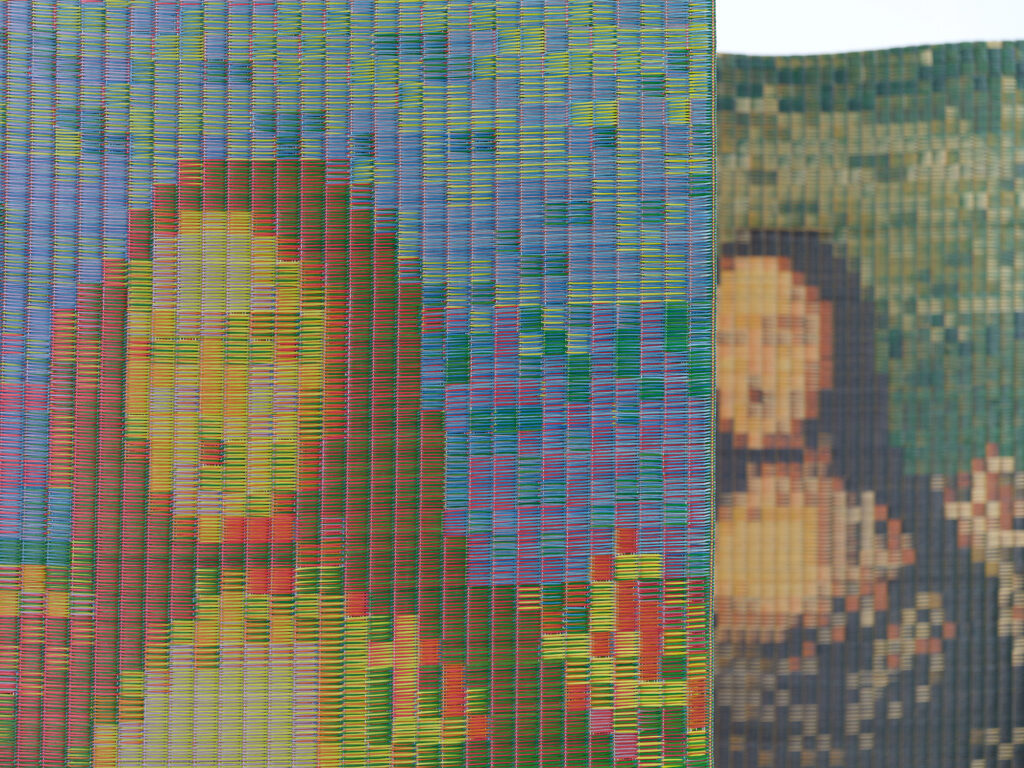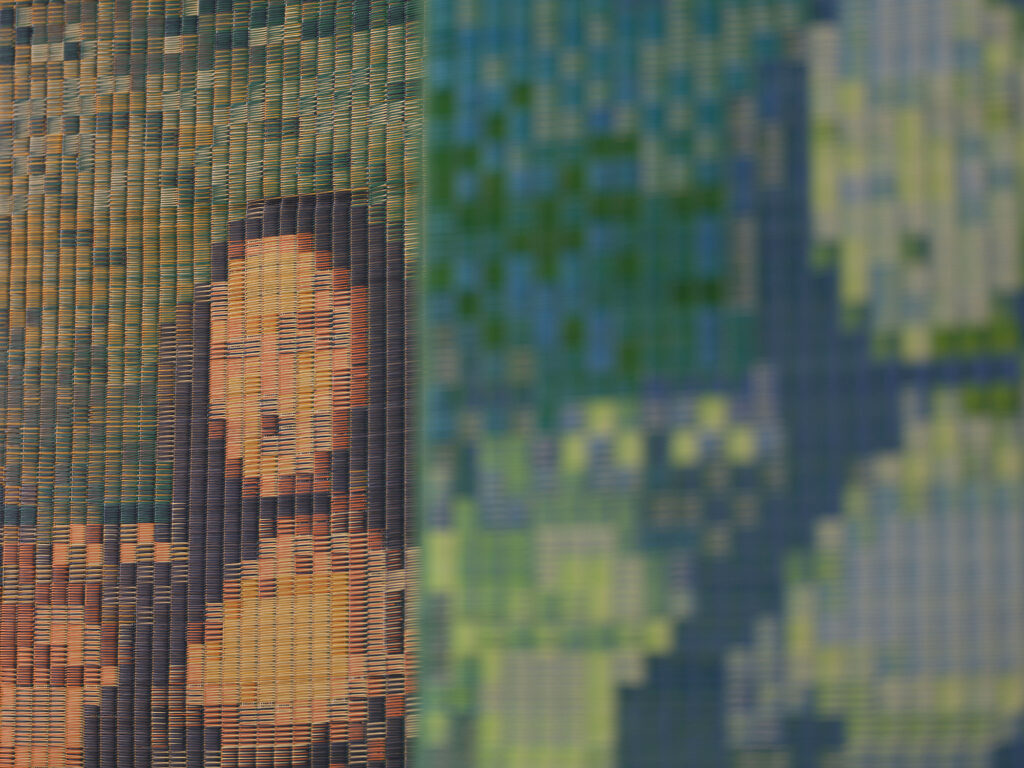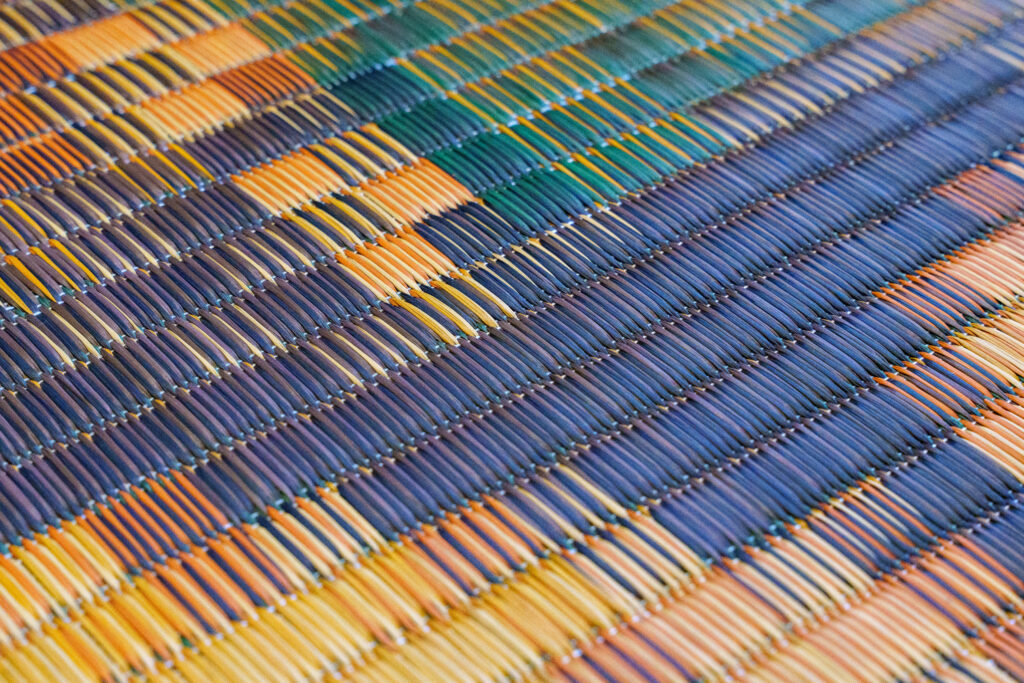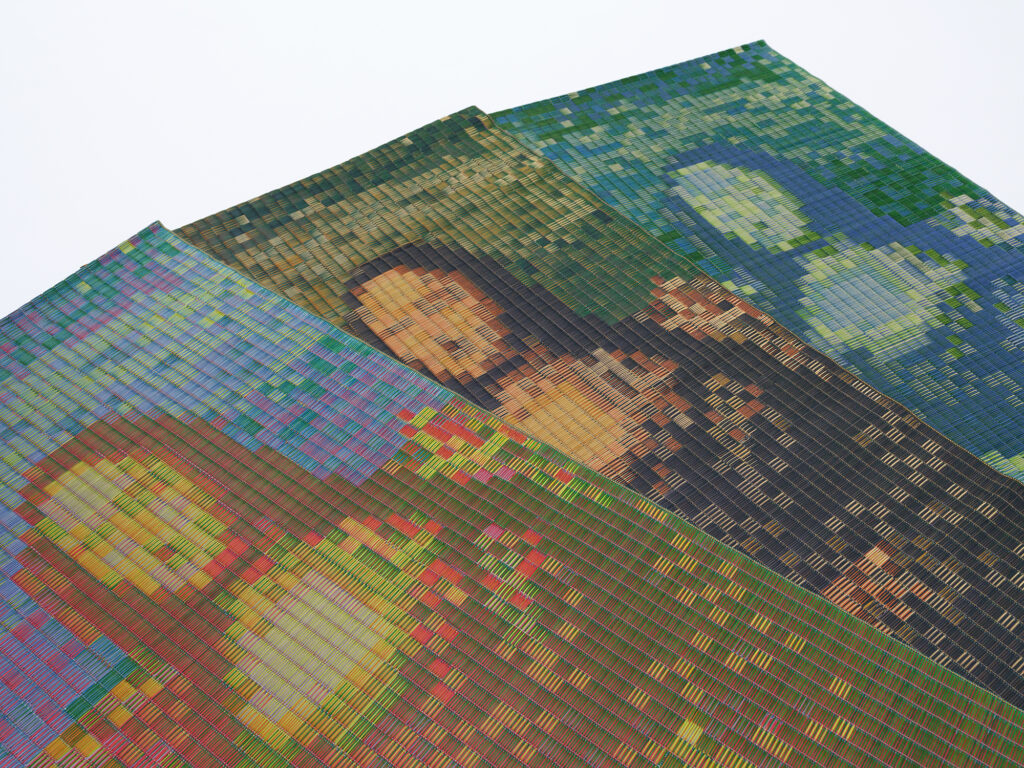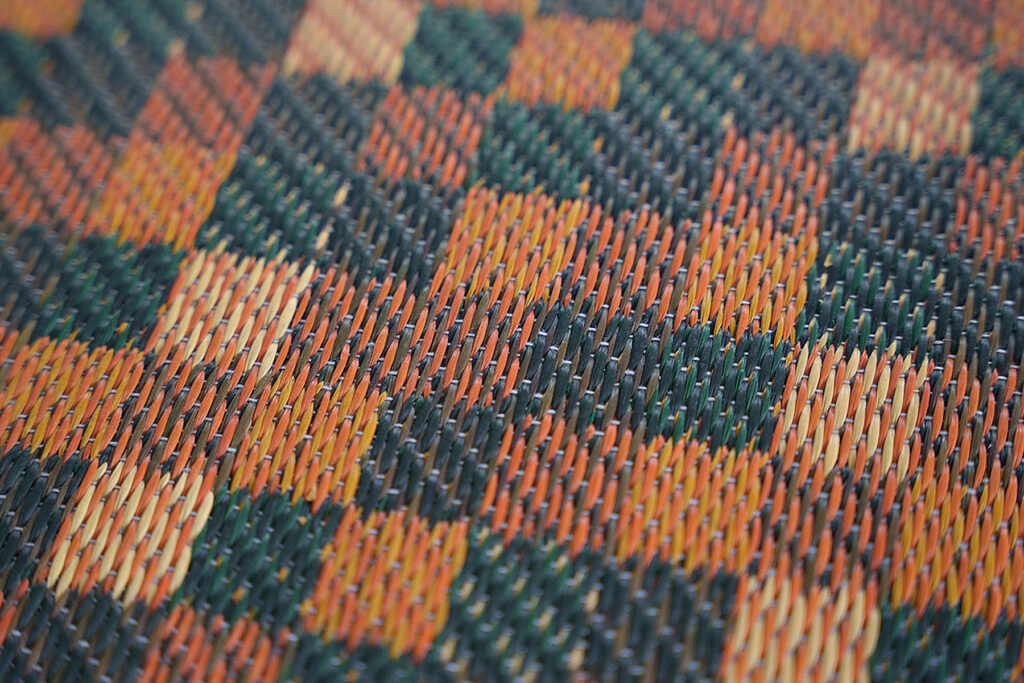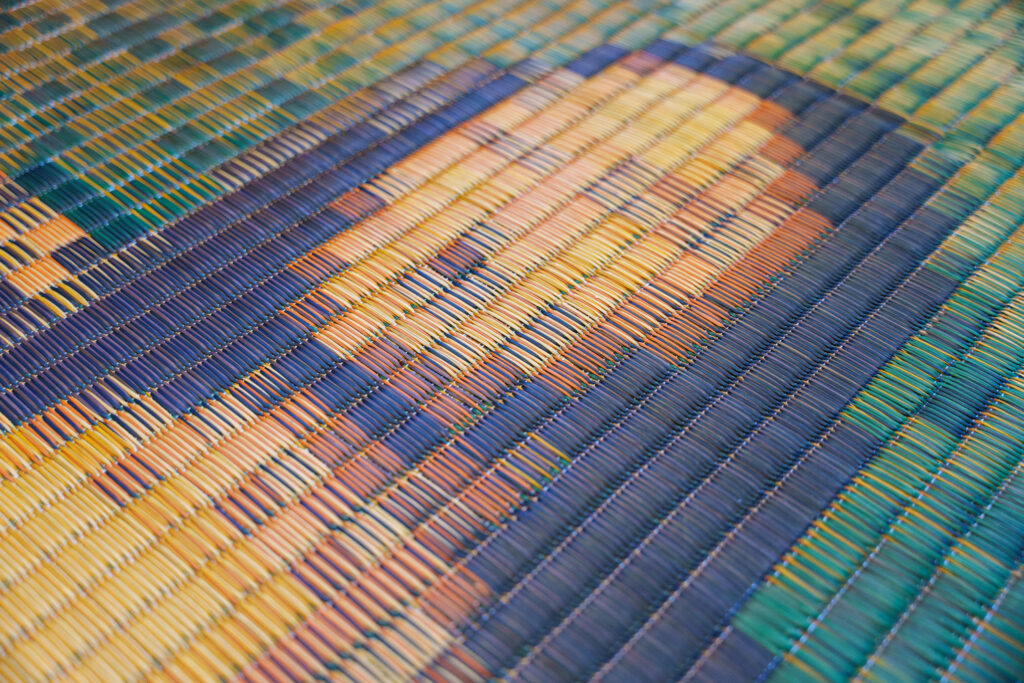
-Exploring the new possibilities of IGUSA grass-
Kakegawa-ori, a traditional weaving technique from the Chikugo region of Fukuoka Prefecture, this piece explores the visual similarities between its structural units and the square form of digital pixels. Kakegawa-ori is characterized by a simple alternating pattern of approximately 3 cm wide and 1 cm narrow weaves, creating distinctive motifs through variations in the woven rush (igusa) weft.
In this work, we reinterpreted the technique through a pixel-based approach to produce a woven image resembling a painting—specifically, Leonardo da Vinci’s Mona Lisa, one of the most recognized artworks in the world. By choosing a universally familiar motif, we aim to make the beauty and blended color effects of igusa weaving more accessible to a wider audience. The piece is woven in the size of a traditional Japanese tatami mat (approx. 87cm × 176cm, “Edo-ma”).
Tatami and igusa, essential materials in traditional Japanese living, are natural, breathable, and well-suited to Japan’s humid climate. However, changes in modern lifestyles have caused a sharp decline in tatami usage. Today, the number of domestic igusa farmers has dropped to just 1/20th of its peak. To sustain Japan’s igusa industry into the future, we believe it is vital to propose new uses for igusa beyond the boundaries of tatami flooring.
In addition to this large-scale work, we also developed a simplified pattern called “ICHIMATSU”, consisting only of pixel-like squares. This design is adapted into interior goods such as placemats and coasters, offering a casual way for people to incorporate igusa into their daily lives. By exploring diverse applications, we continue to expand the potential of igusa—not only as a functional material, but as a form of art.
Production Support: IKEHIKO
Photography: Naoaki Yokota
Model: Gernhaeuser Magdalena

